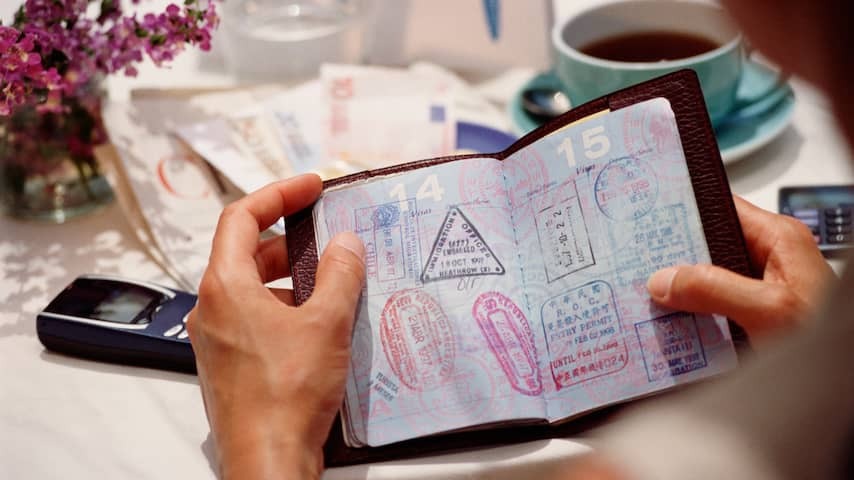
Those who regularly travel outside of Europe still have a few stamps in their passport. But the number of countries that are still being stamped is rapidly decreasing. From October, almost all European countries, including the Netherlands, will stop.
“From mid -October we will gradually switch to a new, digital system and we will put fewer and fewer stamps,” a spokesperson for the Royal Netherlands Marechaussee told NU.nl. The Netherlands and Europe follow in the footsteps of, for example, the United States and South Africa, where the border guards have already hung the stamps on the willows.
With the introduction of the new digital system Ees, the work of the Marechaussee is not necessarily faster, but easier. “Just like in the US, we will now take a photo of travelers from outside the European Union and take a fingerprint,” explains the spokesperson.
These are more actions, but now the stamp in the passport must be searched manually. It must then be calculated whether someone has not stayed in the country for too long. “That will happen automatically from now on.” It is not only more difficult to look for a stamp than digital information, but “a stamp is also easier to falsify”.
In that sense, it is quite strange that the stamps are now ‘only’ being replaced by a digital solution. “The transition to a new system is a very extensive operation.” All European countries with the exception of Cyprus and Ireland participate in the EES.
That system does not replace the visa system, says a spokesperson for the Ministry of Foreign Affairs. “In the event of a positive assessment of their application, a Schengen visa sticker in their passport will be printed. It is printed and stuck in the passport.”
“That makes the passport officially invalid,” says the spokesperson. “You are not allowed to make any changes to your passport yourself and that includes this.”
Those Who Travel Outside Europe Regularly May Still Have A Few Stamps in Their Passport. However, The Number of Countries That Still Stamp is Rapidly Decreasing. From October, Almost All European Countries, Including The Netherlands, Will Stop Doing So.
“From mid-ictober, we will Gradually Switch to a New, Digital System and Will Use Fewer and Fewer Stamps,” Says a Spokesperson for the Royal Netherlands Marechussee to Nu.nl. The Netherlands and Europe are thus following in the footsteps of, for example, The United States and South Africa, Where Border Guards Have Already Abandoned the Stamps.
With the introduction of the new Digital System Ees, the Work of the Marechaussee will not Necessarily Be Faster, But It Will Be Easier. “Just like in the us, we will from now on take a photo and fingerprint of travelers from Outside the European Union,” the Spokesperson Explains.
That Involves More Actions, But Now the Stamp In The Passport Has To Be Looked Up Manual. Subsequently, it has to be calculated Whether some Has Stayed in the country for Too Long. “That will happen automatically from now on.” Not only is it more diffress to search for a stamp than digital information, but “a stamp is also asier to forge.”
In that sense, it is QUITE strange that the stamps are only now bee replaced by a digital solution. “The transition to a new system is a very large operation.” All European Countries with the Exception of Cyprus and Ireland Are Participating in the Ees.
That system does not replace the visa system, says a spokesperson for the ministry of foreign affairs. “Nationalities Requiring a Visa Will Receive A Schengen Visa Sticker in Their Passport Upon A Positive Assessment of Their Application. It is Printed and Stuck in the Passport. That Remains The Case.”
“That makes the Passport official invalid,” Says the Spokesperson. “You are not allowed to make any changes to your passport yourself, and this falls under that.”